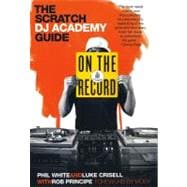
Note: Supplemental materials are not guaranteed with Rental or Used book purchases.
Purchase Benefits
What is included with this book?
Scratch DJ Academy, cofounded by Rob Principe, is the world’s brand in DJ education and access, with studios in New York, Miami, and Los Angeles. Phil White is a freelance writer based in Kansas City. Luke Crisell is the deputy editor at NYLON magazine and is based in Brooklyn, New York.
The New copy of this book will include any supplemental materials advertised. Please check the title of the book to determine if it should include any access cards, study guides, lab manuals, CDs, etc.
The Used, Rental and eBook copies of this book are not guaranteed to include any supplemental materials. Typically, only the book itself is included. This is true even if the title states it includes any access cards, study guides, lab manuals, CDs, etc.